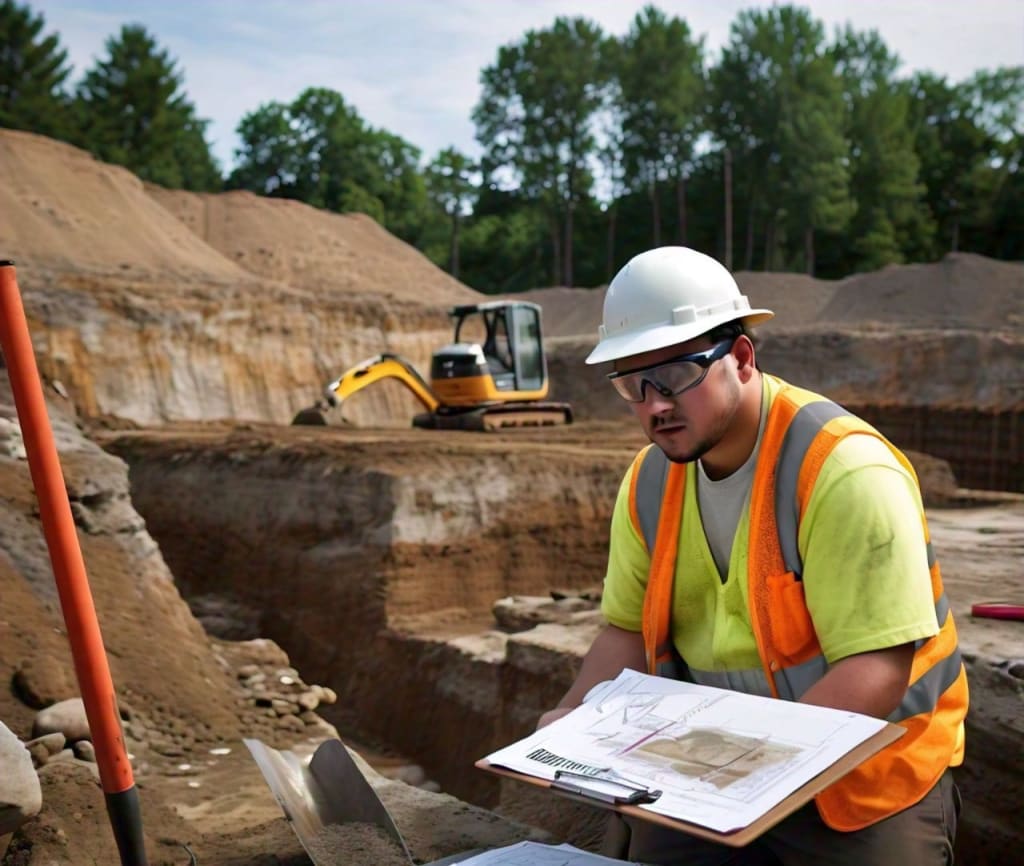Civil Geotechnical Engineering Providers for Commercial and Residential Projects
Civil Geotechnical Engineering Providers for Commercial and Residential Projects
Blog Article
Exactly How Consulting Engineers Enhance Geotechnical Design Projects: Insights Into Their Knowledge, Methods, and Collaborative Approaches
Consulting designers are crucial in enhancing geotechnical design projects, applying their specialized understanding to browse the intricacies of subsurface conditions. Their collaborative methods foster interaction amongst diverse job stakeholders, ultimately forming the task's trajectory.
Function of Consulting Engineers
The know-how of getting in touch with engineers in geotechnical design is fundamental to the effective execution of building projects. These professionals play a pivotal function in evaluating dirt and rock residential or commercial properties, which are essential factors affecting layout and building choices. By conducting thorough website investigations, seeking advice from designers gather vital data that notifies the style process, ensuring tasks are improved stable and ideal ground.
Consulting engineers also supply important understandings right into risk management (geotechnical geologist). They identify possible geotechnical risks, such as landslides, dirt liquefaction, and settlement concerns, enabling stakeholders to apply efficient reduction techniques. Their expertise help in maximizing structure layouts, which can result in considerable price financial savings and boosted safety and security
Moreover, getting in touch with engineers function as an essential link between project owners, engineers, and service providers. Their ability to translate intricate geotechnical data right into workable recommendations fosters partnership and helps with informed decision-making throughout the task lifecycle. This multidisciplinary strategy not just enhances job effectiveness but also ensures compliance with regulatory requirements and best techniques.
Key Methods in Geotechnical Engineering

One main method is website examination, which entails performing field tests and research laboratory analyses to gather information on subsurface problems. Techniques such as Requirement Penetration Testing (SPT) and Cone Penetration Screening (CPT) are widely used to assess dirt stratigraphy and toughness. Additionally, geophysical techniques, including seismic and electric resistivity studies, give non-invasive methods to analyze subsurface qualities.
Another important method is mathematical modeling, which enables designers to replicate numerous circumstances and predict how soil-structure interactions will act under different loading problems. Finite Component Evaluation (FEA) is a typical strategy used in this context.
Furthermore, the layout of foundations, keeping structures, and earthworks counts heavily on these methods - geotechnical geologist. By incorporating sophisticated analytical tools with area data, seeking advice from designers can establish tailored services that attend to details project obstacles, eventually adding to the security and safety and security of construction tasks
Significance of Dirt Analysis
Dirt evaluation works as a fundamental component in geotechnical engineering, supplying crucial insights into the physical and chemical properties of dirt needed for efficient building and construction planning. Understanding soil qualities is crucial for determining its load-bearing capability, drainage habits, and potential for negotiation or instability. Thorough dirt examinations, including tasting and laboratory testing, help identify specifications such as dirt kind, wetness content, thickness, and shear strength.
These analyses inform the selection of suitable construction methods and products, link eventually influencing job security and durability. For instance, cohesive dirts might call for different structure designs compared to granular dirts, requiring customized engineering services. In addition, soil evaluation aids in identifying pollutants that could posture dangers to human health and wellness or the environment, permitting for the growth of mitigation approaches.
Incorporating soil analysis right into the onset of task advancement aids to minimize unpredicted difficulties, making sure that engineers can anticipate and deal with prospective concerns before they escalate. By developing a thorough understanding of the website conditions, getting in touch with engineers can maximize style efficiency and lower costs, thereby enhancing the overall success of geotechnical engineering jobs.
Joint Approaches in Tasks
Effective geotechnical tasks usually hinge on joint methods that unite diverse competence from different disciplines. Effective cooperation among consulting designers, geologists, ecological researchers, and building and construction professionals is essential for resolving intricate challenges and maximizing task outcomes. By leveraging the one-of-a-kind skills and knowledge of each staff member, projects can benefit from an all natural understanding of the site conditions, regulative demands, and engineering constraints.
Regular interaction and interdisciplinary meetings promote the sharing of insights and foster a culture of teamwork. These collective initiatives make it possible for the recognition of potential risks early in the project lifecycle, permitting prompt mitigation approaches. Moreover, incorporating feedback from stakeholders, including local neighborhoods and governing companies, makes sure that all point of views are considered, boosting job approval and conformity.
In addition, the integration of innovative technologies, such as Geographic Details Systems (GIS) and Building Info Modeling (BIM), additional boosts collaboration. These tools enable for the real-time sharing of data and visualization of geotechnical conditions, promoting notified decision-making. Ultimately, a joint approach not only improves task execution yet likewise lays the foundation for innovative solutions to complex geotechnical engineering difficulties.
Influence On Task End Results

Consulting go to website engineers use advanced methods such as danger assessment and predictive modeling, which enhance the precision of task projections. Their ability to integrate ingenious modern check over here technologies, like geotechnical instrumentation and data analytics, even more fine-tunes the style and building processes. Because of this, tasks experience improved efficiency, minimized prices, and minimized delays.
Furthermore, fostering reliable communication and cooperation among employee boosts analytical capabilities. When difficulties occur, an unified front enables speedy identification of options, stopping potential setbacks. Ultimately, the joint efforts of seeking advice from engineers add to higher quality outcomes, guaranteeing that tasks meet both regulatory criteria and client assumptions.
Verdict

Report this page